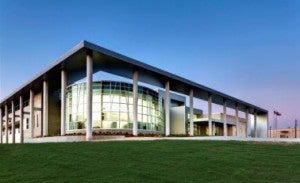America’s Schools On The ABCs Of Energy Efficiency
 As part of my role at EDF, I keep track of stories about the benefits of energy efficiency. By that, I don’t just mean data and figures, rather stories about the real, tangible and positive impacts saving energy can have on everyday people. We live in a data-driven world, especially those of us who work on energy and climate issues, but it’s the stories about people that really stay with us. In the past few months, I’ve noticed a quite a few stories from local papers around the country discussing the benefits that schools have seen from implementing customer, or demand-side, solutions – such as energy efficiency, on-site renewables, like rooftop solar, and demand response (DR) initiatives – which allow customers to voluntarily reduce their high electricity use and receive a payment for doing so in the process.
As part of my role at EDF, I keep track of stories about the benefits of energy efficiency. By that, I don’t just mean data and figures, rather stories about the real, tangible and positive impacts saving energy can have on everyday people. We live in a data-driven world, especially those of us who work on energy and climate issues, but it’s the stories about people that really stay with us. In the past few months, I’ve noticed a quite a few stories from local papers around the country discussing the benefits that schools have seen from implementing customer, or demand-side, solutions – such as energy efficiency, on-site renewables, like rooftop solar, and demand response (DR) initiatives – which allow customers to voluntarily reduce their high electricity use and receive a payment for doing so in the process.
For example, a story from the Louisville, Kentucky National Public Radio station WFPL covering the nation’s first net-zero school recently caught my attention. To be considered a true “net-zero” building is an impressive feat, because it means the facility’s net annual energy consumption, AND its carbon footprint, is zero.
The featured school, Richardsville Elementary in Warren County, has made some impressive improvements, from installing geothermal heating and cooling, bamboo gym floors, solar panels on the school rooftop and in the parking lot, efficient cooking technologies in the cafeteria to using a ton of natural lighting. As a result, the school receives zero utility bills. But the two most compelling pieces of this story are the energy costs and the educational opportunities.
Kentucky has some of the cheapest electricity prices in the country. Many states, particularly in the southern U.S., also have low electricity prices—meaning, the cost incentive is not as powerful for energy efficiency. But I would argue that, regardless of electricity prices, schools always have an incentive to save money. With schools, for every energy dollar saved, one more dollar goes to good teachers, textbooks and computers. And the non-monetary incentives are extra important when talking about children, whose developing lungs need the cleaner, indoor air and more natural lighting that come with efficiently-designed schools, as detailed in my previous post on schools.

Additionally, these impressive and innovative energy conservation efforts offer educational opportunities, such as displays in the school that teach students different environmental issues, like recycling and geothermal energy. For instance, at Richardsville, the students can actually monitor the schools’ solar panels to see how they produce electricity. Another school, Lady Bird Middle School in Irving, Texas, has implemented several energy saving measures – such as daylighting, geothermal, solar and wind energy, energy efficient kitchens and much more – and also has an impressive 3-D interactive display panel, which exposes the kids to and educates them on the inner workings of the clean energy technologies.
Greening our schools saves money on electricity bills, despite what the local going price of electricity is.
But there are additional, significant advantages to an environmentally friendly school:
- Improved indoor and outdoor air quality, essential for better learning and protection for developing lungs and brains;
- More interest in math and sciences as students observe and participate in how the school conserves energy and water; and
- Increased societal change when the kids reteach what they’ve learned and help influence the behavior of their households to conserve energy and water, thus lowering household utility bills.
So, by conserving energy in our schools and making it an interactive experience, we improve the health of future generations, cut our utility bills at the school level (and hopefully the household level), reduce stress on the electric grid and our scarce water resources and hopefully inspire a new generation of scientists to help solve our resource scarcity problems. I give that plan an A+.












2 Comments
Very good article and information, thank you! We’ve seen colleges grapple with energy efficiency over the past few years, and K-12 building managers face similar challenges in daily and seasonal demand cycles, rising costs of cooling and maintaining data centers and wireless networks, and shrinking capital budgets. New construction is exciting, but there are plenty of opportunities to retrofit and rehab existing buildings and grounds.
Jason Malikow
Director of Marketing & Operations, AREVS LLC
It is good to see a focus on efficiency which works 100% of the time as opposed the much touted solar and wind which work 10%-35% of the time requiring CO2 centric solutions to complement them. We need to see more evidence of costs of these two approaches. Many people are pure cheerleaders for industrial wind and solar energy with little regard for their impact. Efficiency and conservation have zero impact…where as Industrial Wind Turbines can have major impact in their local environment. Just read a report where 5 Industrial Wind Turbines were killing 78 birds and bats a year including threatened and endangered birds…one species only had 25 mating pairs in the entire state…What happens when you have thousands upon thousand of these industrial machines. We all want to do good…but we can’t just put blinders on, to actual impact. I wish you would have detail of cost and benefit…like they spent $2 Million in solar to save $1000 a month….versus lots of windows which cost $100,000 and saved $1000 a month. The buckets of money for renewables won’t always be there and we need to realize what are the smart choices. Not every school system or business is going to have piles of money for vanity projects.